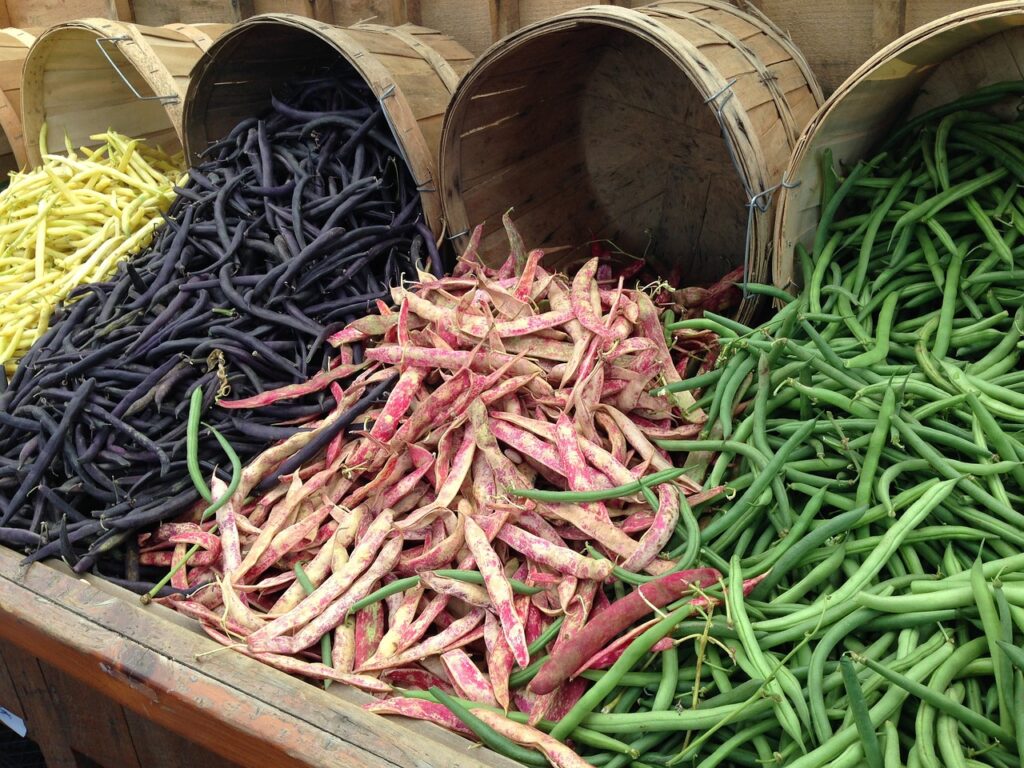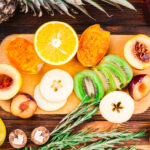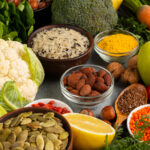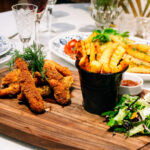
Table of Contents
Overview
Iron is a vital mineral that plays an essential role in the body by aiding oxygen transport and supporting energy production. It is critical for overall health and well-being, and its deficiency can lead to anemia, characterized by symptoms such as fatigue, weakness, and impaired cognitive function. To avoid iron deficiency, it is crucial to consume iron-rich foods regularly. In this comprehensive guide, we will explore the top iron-rich foods, how to enhance iron absorption, meal planning tips, and considerations for individuals with special dietary needs.
Why Iron is Important for Health
Iron contributes to various bodily functions, including
- Oxygen Transport: Iron is a key component of hemoglobin, a protein in red blood cells responsible for carrying oxygen from the lungs to the tissues.
- Energy Production: It plays a role in the conversion of nutrients into energy at the cellular level.
- Immune Function: Iron supports the immune system by helping the body fight off infections.
- Brain Health: Adequate iron levels are necessary for optimal cognitive development and function, especially in children and adolescents.
When the body lacks sufficient iron, it cannot produce enough healthy red blood cells, resulting in iron deficiency anemia. This condition is common among women of reproductive age, children, and individuals following restrictive diets
Related : The Best Brain Foods to Boost Concentration and Mental Clarity
Types of Iron: Heme vs. Non-Heme
Iron is classified into two main types:
- Heme Iron: Found in animal-based foods, such as meat, poultry, and fish. It is absorbed more efficiently by the body, with an absorption rate of 15-35%.
- Non-Heme Iron: Present in plant-based foods like legumes, vegetables, nuts, and fortified cereals. It is absorbed less efficiently, with an absorption rate of about 2-20%.
Knowing the difference between heme and non-heme iron is essential when planning a diet to ensure adequate intake and effective absorption
Top Animal-Based Iron Sources

Animal-based foods are typically high in heme iron, which is more readily absorbed by the body. Incorporating these foods into your diet can help maintain healthy iron levels.
Red Meat
Red meat, such as beef, lamb, and pork, is an excellent source of heme iron. The iron content in red meat can significantly contribute to daily requirements, especially in individuals with increased needs, like athletes or menstruating women.
- A 3.5-ounce (100-gram) serving of lean beef contains approximately 2.7 mg of iron, accounting for around 15% of the daily recommended intake for an average adult
Related : Health Benefits of Green Tea
Poultry
Poultry, including chicken, turkey, and duck, offers a good amount of iron, particularly in darker meat. The thighs and drumsticks contain higher levels of iron compared to white breast meat.
- A 3.5-ounce (100-gram) serving of roasted chicken thigh provides about 1.3 mg of iron, making it a suitable option for those looking to increase their iron intake.
Organ Meats
Organ meats, such as liver, kidneys, and heart, are among the richest sources of heme iron. Despite their high cholesterol content, organ meats are nutrient-dense and provide essential vitamins like vitamin A, B12, and folate.
- A 3.5-ounce (100-gram) serving of beef liver delivers approximately 6.5 mg of iron, making it one of the most iron-rich foods available.
Seafood
Seafood, including fish, shellfish, and crustaceans, can be excellent sources of iron. Oysters, clams, sardines, and shrimp are especially high in iron, along with other important nutrients like omega-3 fatty acids and zinc.
- A 3.5-ounce (100-gram) serving of cooked oysters contains around 7 mg of iron, which is nearly 40% of the daily requirement for an adult man.
Eggs
Eggs provide a moderate amount of iron, making them a valuable addition to a balanced diet. While not as rich in iron as red meat or seafood, eggs are still beneficial for individuals seeking to boost their iron intake.
- One large egg contains about 0.9 mg of iron
Top Plant-Based Iron Sources

For vegetarians, vegans, or individuals who prefer plant-based diets, there are several foods that offer substantial non-heme iron. Pairing these foods with vitamin C-rich options can significantly improve absorption
Related : The Healthiest Breakfasts Starting Your Day Right
Legumes
Legumes, such as lentils, chickpeas, beans, and peas, are excellent sources of non-heme iron. They also provide a good amount of protein, fiber, and other nutrients like folate and potassium.
- One cup of cooked lentils contains approximately 6.6 mg of iron, covering about 37% of the daily recommended intake for women.
Dark Leafy Greens
Dark leafy greens, including spinach, kale, collard greens, and Swiss chard, are rich in iron, though their absorption can be limited by the presence of oxalates (natural compounds that can inhibit iron absorption). Cooking these greens or consuming them with vitamin C-rich foods can enhance iron uptake.
- One cup of cooked spinach provides about 6.4 mg of iron.
Nuts and Seeds
Nuts and seeds, such as pumpkin seeds, sunflower seeds, cashews, and sesame seeds, are good plant-based iron sources. They also offer healthy fats, protein, and other essential minerals like magnesium and zinc.
- A quarter-cup (28 grams) of pumpkin seeds offers roughly 2.5 mg of iron.
Whole Grains
Whole grains, including quinoa, brown rice, oatmeal, and fortified cereals, contain moderate amounts of iron. Consuming a variety of whole grains ensures a diverse nutrient intake, including fiber and B vitamins.
- One cup of cooked quinoa provides about 2.8 mg of iron, while fortified cereals can provide up to 18 mg per serving.
Tofu and Tempeh
Soy products like tofu and tempeh are not only high in iron but also rich in protein, making them popular among vegetarians and vegans. They can be easily incorporated into stir-fries, salads, and other dishes.
- Half a cup of cooked tofu contains approximately 3 mg of iron
Tips to Enhance Iron Absorption
While it is important to consume iron-rich foods, some factors can influence iron absorption. Here are strategies to optimize the uptake of dietary iron:
Pair Iron-Rich Foods with Vitamin C
Vitamin C (ascorbic acid) significantly enhances the absorption of non-heme iron. Including vitamin C-rich foods, such as citrus fruits, bell peppers, strawberries, or broccoli, in meals with plant-based iron sources can improve iron uptake.
- Add lemon juice to a spinach salad or pair lentils with bell pepper slices
Related : Fruits with the Most Protein
Avoid Inhibitors of Iron Absorption During Meals
Certain substances can interfere with iron absorption:
- Calcium: High doses of calcium, found in dairy products or supplements, can reduce iron absorption. It is advisable to consume dairy separately from iron-rich meals.
- Polyphenols and Tannins: These compounds, present in tea, coffee, and some herbal infusions, can inhibit iron absorption. Avoid consuming these beverages with meals rich in iron.
- Phytates: Found in whole grains and legumes, phytates can bind iron and reduce its absorption. Soaking, fermenting, or sprouting these foods can decrease phytate levels and enhance iron bioavailability.
Use Cast Iron Cookware
Cooking with cast iron pans can increase the iron content of food, particularly when preparing acidic foods like tomato sauce. This is a simple way to boost iron intake through everyday cooking
Special Dietary Considerations
Different populations may have specific dietary needs regarding iron intake. Below are some considerations for various groups:
Pregnant Women
During pregnancy, iron needs increase to support fetal development and increased blood volume. Pregnant women are advised to consume around 27 mg of iron per day, compared to 18 mg for non-pregnant women. Including iron-rich foods and possibly iron supplements, as recommended by a healthcare provider, can help meet these increased needs.
Athletes
Athletes, especially endurance runners, may have higher iron requirements due to increased iron loss through sweat and physical exertion. Regular screening for iron levels and incorporating iron-rich foods can help maintain optimal performance.
Vegetarians and Vegans
Individuals following plant-based diets may need to consume more iron due to the lower absorption rate of non-heme iron. Combining iron sources with vitamin C-rich foods and utilizing iron-fortified products can help meet daily requirements.
Children and Adolescents
Rapid growth during childhood and adolescence increases iron demands. Ensuring a diet that includes a variety of iron-rich foods is crucial for supporting development and preventing deficiency.
Older Adults
Iron requirements for older adults may decrease, but factors like reduced appetite, medication use, and chronic health conditions can affect iron levels. Monitoring iron status and making dietary adjustments
Related : Drinks That May Help You Sleep
The Takeaway
Including iron-rich foods in your diet is essential for maintaining optimal health and energy levels. Iron plays a vital role in carrying oxygen throughout the body, supporting immune function, and boosting overall vitality. By incorporating a mix of heme and non-heme iron sources, such as lean meats, leafy greens, legumes, and fortified cereals, you can help prevent iron deficiency and improve iron absorption. Remember to pair non-heme iron sources with vitamin C-rich foods to enhance absorption, and consider consulting a healthcare professional if you suspect an iron deficiency. Making these dietary adjustments can go a long way in supporting your health and well-being.
FAQs About Iron-Rich Foods
What are the symptoms of iron deficiency?
Iron deficiency can cause symptoms like fatigue, weakness, pale skin, dizziness, headaches, and shortness of breath. Severe cases can lead to iron deficiency anemia, which may cause more pronounced symptoms such as irregular heartbeat and chest pain.
How much iron do I need daily?
The daily recommended intake varies by age and gender. Adult men typically need about 8 mg of iron per day, while women aged 19-50 need around 18 mg due to menstruation. Pregnant women require about 27 mg per day, while older women (over 50) need 8 mg daily.
Can I get enough iron from a vegetarian or vegan diet?
Yes, it’s possible to meet daily iron requirements through a plant-based diet by consuming non-heme iron-rich foods like legumes, dark leafy greens, tofu, nuts, seeds, and fortified cereals. Pairing these foods with vitamin C-rich options can improve absorption.
Do calcium-rich foods interfere with iron absorption?
Yes, high amounts of calcium can inhibit iron absorption. To maximize iron intake, avoid consuming large quantities of dairy products or calcium supplements with iron-rich meals. It’s better to space them out throughout the day.
Is it possible to consume too much iron?
Yes, excessive iron intake can lead to a condition called iron overload, which may cause symptoms like joint pain, fatigue, abdominal pain, and organ damage over time. It is essential to stay within recommended daily limits unless a healthcare professional advises otherwise.











